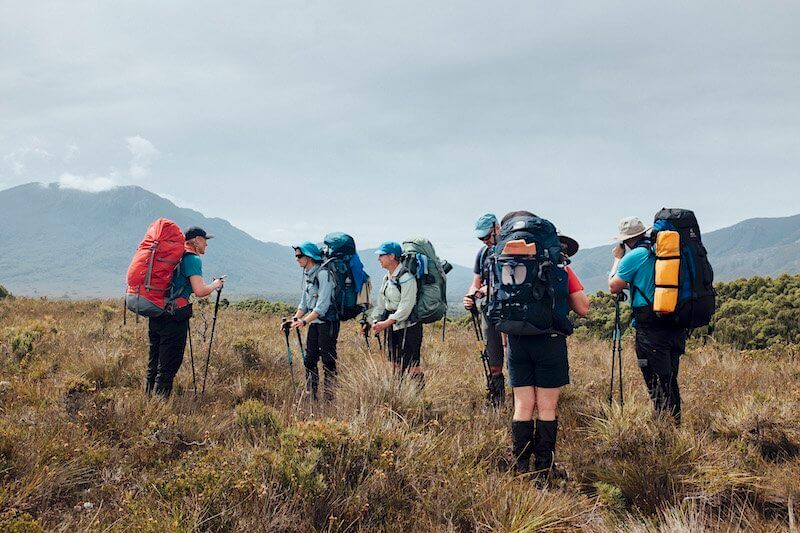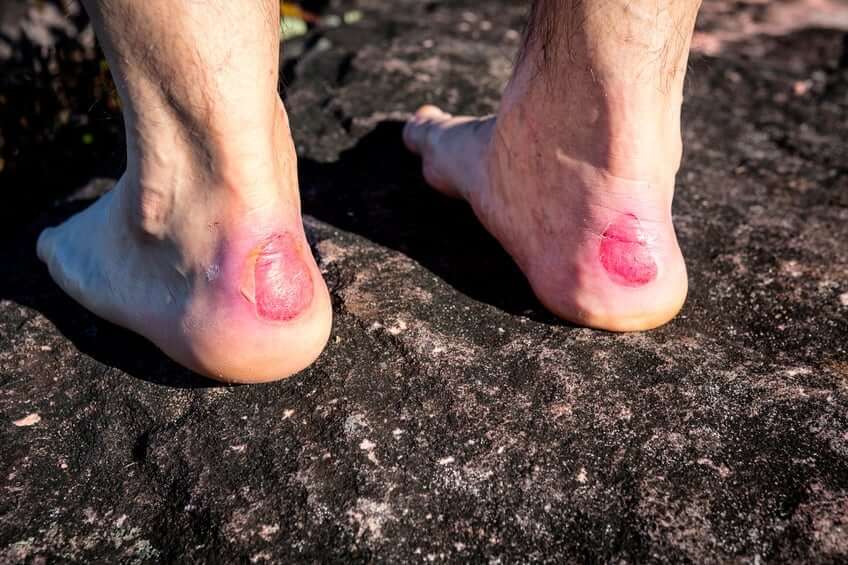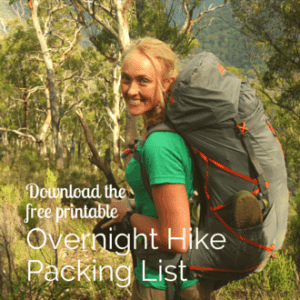The last couple of years have seen a huge growth in the trend for pack-free multi-day walks. Sure, this style of walking opens up opportunities for people who for various reasons don’t want to (or can’t) carry a full pack for days at a time, but my big hope is that it doesn’t stop people from picturing themselves moving self-sufficiently through the bush, moving from campsite to campsite on epic multi-day journeys.
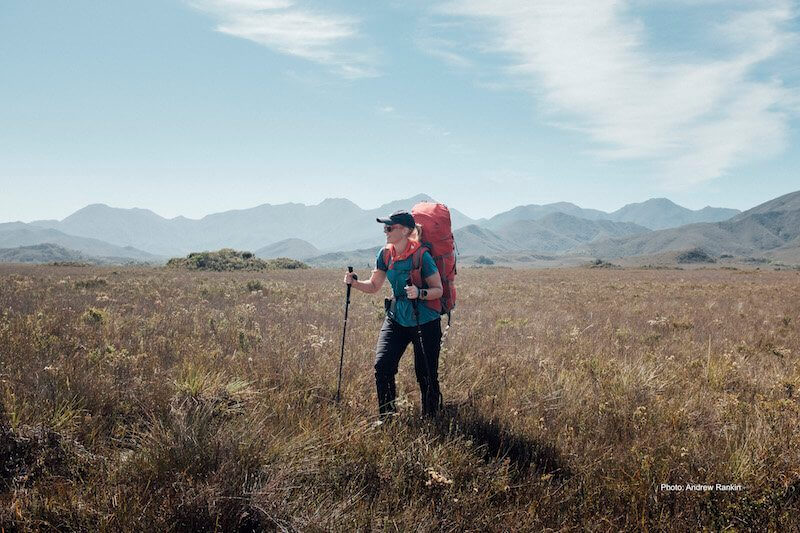
The rewards these types of trips can bring are enormous and touch on not only the obvious sense of achievement in reaching a goal, but is also deeply connected to the things that are really important in life… away from clutter, connectivity, consumerism and our addiction to stuff. Carrying an overnight pack shines a light on our basic needs of food, water and shelter.
If you’ve been thinking of stepping into overnight hiking, here’s my top tips to help you build up to being a turtle and how to train for a heavy backpack.
Don’t Rush
Preparing your body for carrying extra weight takes time. Making a last minute decision to hike the Larapinta Trail a week before, with no training is asking for trouble. Ideally, start 8-12 weeks out so you’ve got time to build up gradually. This will help prevent injury and make the journey to being pack-fit more enjoyable.
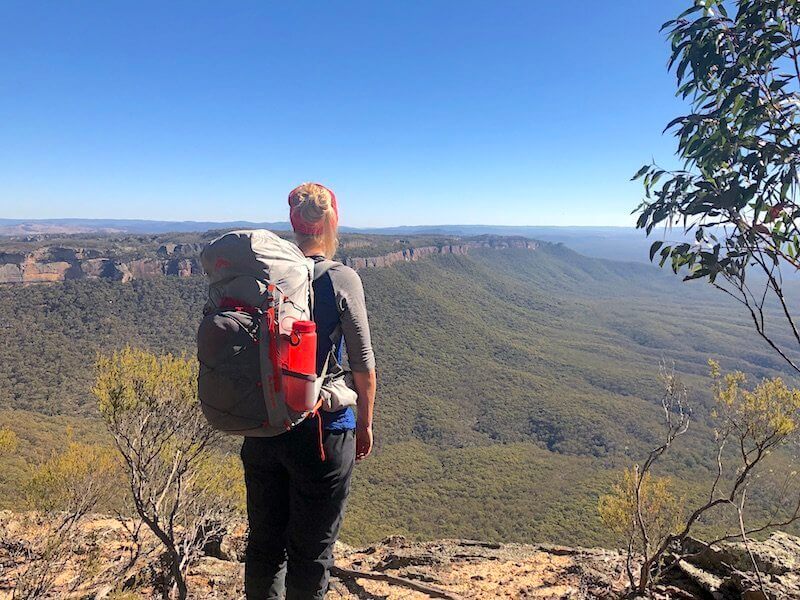
Research & plan your pack weight
There’s many different approaches and opinions about how much weight you should carry in a pack. However, what is unquestionable, is that you will have a much better trip if you’re carrying the lightest weight possible. There’s old traditional approaches around percentage of body weight, but with modern gear and packs, these formulas seem unnecessarily heavy. The weight of your pack will be determined by the type of trip you’re planning on, the number of days food you’ll need to carry and access to drinking water. It could be anywhere from <10kgs for a two-day trip, to possibly 20kgs for a couple of weeks. So plan and train for the pack weight you intend to carry and set yourself a challenge to have it as light as possible through smart equipment choices and clever food planning. Your body and long term joint management will be much happier too!
Build up gradually
Let’s assume you’re planning to do the Overland Track in Tasmania with a planned pack weight of 16kgs. With 8-12 weeks of training, head out on walks every few days with your normal day pack weight, then add 2kgs each time (bags of rice or bottles of water are good), until you are at the goal pack weight.

Train with your actual backpack
The Nirvana of every multi-day bushwalker is to feel ‘at-one’ with your pack. If you need to buy (or borrow) a new pack for your adventure, make sure you do this early so that all your training is done with this pack. As you gradually build up the weight you’ll become familiar with how the pack behaves and how the straps respond to the increasing weights.
Hills and stairs are your friend
They might not feel like it now, but by gradually adding in hills and stairs to your training walks, you are fast tracking your body’s changes to the new routine. Going steadily up stairs and slowly controlling your descent downhill, will help build strength in not only your ankles and knees, but also your core – a key in overall stability and comfort for carrying a heavy pack.
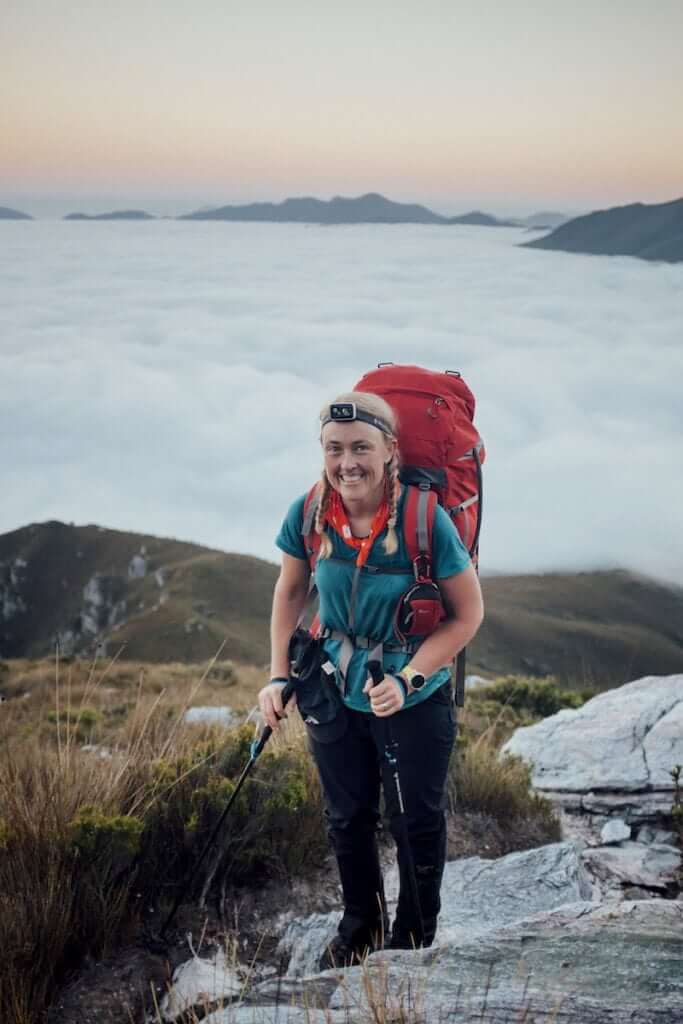
Fitted pack and learn to adjust
If possible, set yourself up for success by using a pack that has been properly fitted by a professional in-store with weights equivalent to your end goal weight. A properly fitted pack will transfer and distribute the weight of your pack off your shoulders and down onto your hips. If you feel you’re ‘shouldering’ the weight, then they need adjustment.
CARO TIP: Most pack straps and buckles will shift and move whilst you’re walking, so it’s really important that you learn how to adjust them – they aren’t ‘set and forget’ from your initial fitting. Get the shop assistant to teach you what each strap does and how they affect the feeling overall. It makes a HUGE difference and learning to adjust your shoulder straps and load-lifter straps can help you go up and down hills!
Consider walking poles
Research from the Journal of Sports Sciences tells us that hiking poles can reduce up to 25% of force and compression on knee joints, especially when going downhill. In addition, the increase in balance that they can bring when lugging a heavy pack across mixed terrain is a huge benefit.
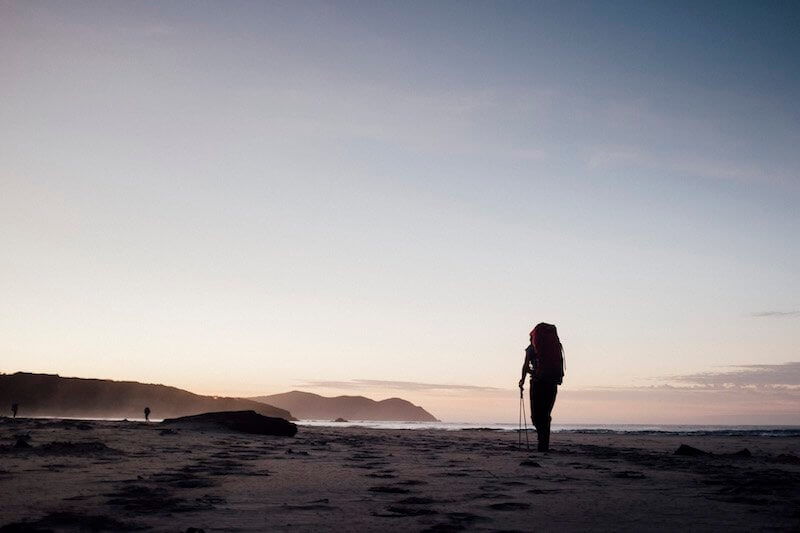
And finally…
Anyone who has ever carried a heavy pack will tell you that there’s some magic and mystery that happens around day 3. It’s when your body has found this new normal and for some wonderful reason it doesn’t feel as heavy or cumbersome as day 1. So if you’re struggling on day 1, just remember… day 3 is coming.
This article first appeared in Great Walks Magazine.
